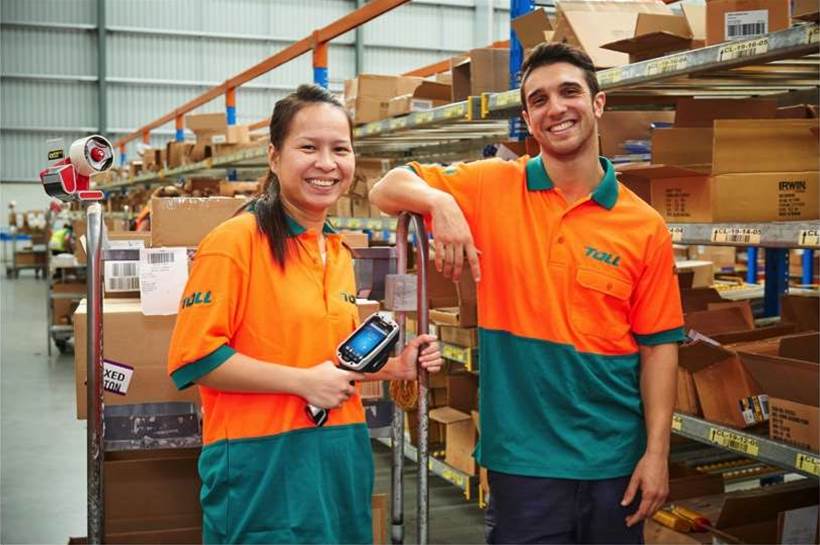Toll Global Logistics is one of three companies worldwide to trial a new Zebra handheld mobile scanner that could open up a range of IoT opportunities in its warehouses.
The company has spent the past six months trialling the Zebra TC8000 - a handheld, Android-based mobile computer designed for use in warehouse and logistics operation environments - at its Altona distribution centre in Victoria.
While the centre's workers found improvements in scanning speeds directly through the trial, there are potentially even greater gains to be had from the technology.
That's because the TC8000 includes Bluetooth Low-Energy (BLE) and near-field communications (NFC) technologies, which are short-range connectivity methods favoured in IoT applications.
At the product launch in Sydney, Zebra's APAC senior technical director Wayne Harper explained how technology like BLE could improve Toll's operations.
"A freight operator like Toll can put a BLE tag onto a unit load device), the belly of a plane, or on a container to ensure they are delivering direct to the right location," he said.
Toll Global Logistics' (TGL) customised solutions division senior IT operations manager Andy Kim told IoT Hub that the company is already looking at how it might take advantage of the BLE capabilities of the TC8000.
“We’re looking at potential safety applications, internal track and trace, location awareness, people’s interactions with forklifts, people in aisles, designating lockdown areas, and so on," Kim said.
These applications would be achieved by using the TC8000 in conjunction with other systems in the warehouse.
Zebra Technologies would remain heavily involved in the evolution of these potential use cases, Kim said.
Toll’s IoT-enabled future
Customised solutions division head of business services Gavin Norman said IoT could help TGL continue its leading role in logistics innovation.
Norman believed IoT could enable better asset management in the warehouse, "more natural, feature-based functionality to track and trace products" in the supply chain, as well as to improve safety and reduce risk.
Kim believed that IoT could improve the amount of data that TGL had available to it to improve operations and decision-making.
Norman said TGL is currently investigating where sensor-based functionality and assets can best be deployed in its environment.
“We expect to use these assets and put software over the top of them to allow us to see what our people are doing, what our assets are doing, and what our products are doing; not just inside the warehouse but also outside of it as well,” he said.







